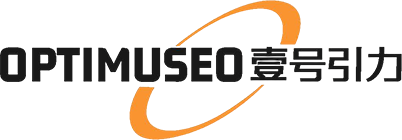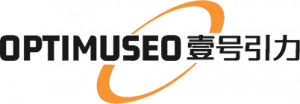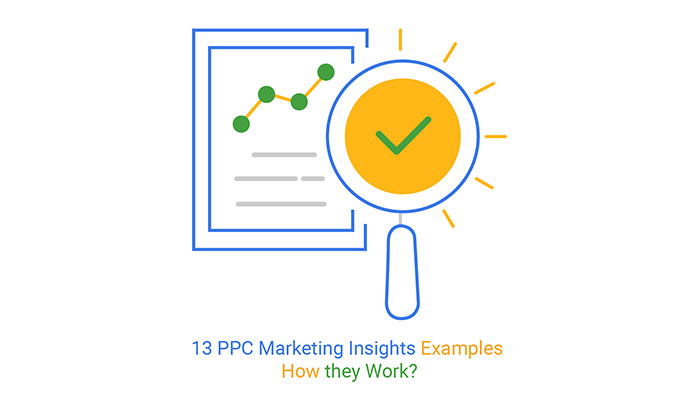We are sure you have heard the following phrases many times:
"Don't miss out on these key insights." "Do you have the insights needed for your PPC management?"
But what is the actual definition of marketing insights?
If you have been alive in the past decade, then you have probably heard the word "insights" countless times. In fact, it has become one of the favorite words of marketers today.
But what does it actually mean?
The more people misuse the term "marketing insights," the more it becomes a cliché.
Insights are a combination of life/work experience with systematically collecting and analyzing data. Data without context is meaningless because it does not tell you what the next steps should be.
In simple terms, marketing insight is the discovery of actionable and previously unrealized realities related to your target market through data analysis.
The goal of marketing insights is to profitably satisfy the actual needs and desires of your target audience. In other words, the best marketing insights examples provide value to your customers at the lowest cost possible.
This blog will introduce you to 13 core insights and validated practical tips. These tips help many other PPC managers create value for their clients.
Whether you are a newbie in managing PPC ad campaigns or an experienced veteran, we hope you can find a lot of value from the tips in this blog post.
Marketing Insights Examples for Pay-Per-Click (PPC) Management
Before we move forward, let's make one thing clear. Insights and actionable insights are different. The latter is most important for your management.
What's the Difference Between Insights and Actionable Insights?
Insights are the answers you derive from data after analyzing and visualizing it.
On the other hand, actionable insights lead to action happening, not just answering questions. Thus, it makes you rethink things and drive you to find new solutions.
There is nothing more boring than sifting through massive amounts of data to find actionable answers.
To make insights actionable, they must be:
Aligned: They have to align with the goals of your clients.
Relevance: A single insight can be a strong signal to one person and more noise to another.
When it comes to relevance of insights, there is a level of subjectivity involved. Providing insights to the right people at the right time.
Specific: The more specific and detailed the insights, the more likely you are to take action.
Sometimes, insight metrics can highlight interesting anomalies, but lack enough detail to drive immediate action.
13 PPC Marketing Insights Examples Critical for PPC Ad Campaign Managers
Inexperienced PPC managers think they have done the job after launching an ad campaign.
That's far from the truth!
In reality, Search Engine Marketing (SEM) management is not about marketing, but more about managing your campaigns and continuous improvement.
Yes, effective keyword targeting is crucial, but it's an ongoing process!
Keep reading to discover 13 critical areas of Google Ads that you need to monitor and optimize continuously.
Key and timely insights into these critical areas (metrics + dimensions) can save time needed to optimize campaigns for desired results. You will yield healthier returns for your clients.
These 13 insights sources are categorized into 2 categories.
The first is specific campaign metrics to pay attention to. The second consists of dimensional variables.
Let's dive in.
PPC Campaign Metrics
While there are many metrics to explore in PPC, here are the metrics you should not overlook:
1. Impressions
2. Impression Share
3. Clicks
4. Cost
5. Conversions
6. Click Through Rate
7. Cost Per Conversion
8. Quality Score
9. Conversion Rate
10. Return on Ad Spend (ROAS)
Continue reading to uncover tips about each metric and dimension critical for core PPC management.
1. Impressions
Every time your ad appears on a search engine results page, it counts as an ad impression.
This is the most important metric you need to drive conversions and revenue.
Without impressions, your target audience won't see your ads.
For this reason and more, monitoring your impressions is crucial. Low impressions indicate issues with your bidding strategy.
Your bid may be too conservative to get your clients' ads in front of the target audience. Or your ads are not optimized for the search terms triggering based on user intent.
When evaluating your impressions, look at times of the day. If you see no impressions after a certain time of day, it indicates your budget is running low.
So, your budget is exhausted too early. And your client's PPC ads are not being placed after a certain time of day.
The impression report is a rich insight into the behavior of your target audience, including their search patterns. It is a valuable source for keyword research.
Do your target audience prefer desktop or mobile devices?
What time (HoD) are they actively searching for products and services?
Which day of the week (DoW) performs very well?
Also, look at the Top Impressions Share percentage metric.
This metric shows the frequency at which your ads are placed at the top. A higher percentage indicates that your ads typically rank above our competitors.
2. Impression Share
The impression share measures the actual impressions your ad received compared to the potential impressions your ad could have received.
So, it's the number of times your ads missed impressions for some reason.
Analyzing the impression share is a great strategy to identify areas in the campaign that need improvement to match the success level of other PPC ads.
Impression share becomes a problem when it's particularly low for a given keyword, ad group, or ad campaign.
So, if you are unsure which area of the campaign to focus on, this is a good starting point.
When analyzing impression share data, look at it at every level and with filters. Monitor the impression share at the campaign, ad group, and keyword level. And remember to compare impressions shares between different dimensions (such as match type, device, keyword, etc.) to gain deeper insights.
3. Clicks
Clicks occur when a user sees your ad (resulting in an impression) and clicks on the ad for more information and further action.
Clicks are a vital metric for optimizing PPC ad campaigns.
If your clicks are significantly higher compared to impressions, it clearly indicates that attention-grabbing, enticing ad copy can (and should) be replicated elsewhere in your ad campaigns.
Clicks closer to the impression share indicate that the PPC campaign is running well.
On the other hand, if you have 1,000 impressions but no one clicks, it indicates various variables are an issue, such as:
Misaligned keyword targeting
Inadequate attractiveness of ad creatives to generate engagement, etc.
Unappealing ad copy
So, low clicks mean serious danger. You need to take urgent actions to optimize ads for maximum engagement.
Clicks are a powerful performance metric. Therefore, analyze clicks on different device types, times of the day, and other dimensions to gain actionable insights.
This will help you get data-driven answers about your target audience, such as the times and locations they are most receptive to ad offers.
How to Increase Clicks?
Optimize ad copy for your client's PPC ads to attract maximum engagement.
Test different ad types and only use effective ads.
Create a keyword list that matches user intent (keywords with a tight theme).
Use retargeting audiences to increase your click-through rate.
4. Cost
Cost is the amount spent for getting clicks and impressions.
You have to spend money to make money, right?
However, if you spend too much and don't see the right return on investment, you might be burning money instead of earning it.
Cost is especially essential, particularly for small to medium-sized firms with PPC agencies. You really need to stretch your budget to absolute limits.
Cost is an important metric to measure the effectiveness of Google Ads campaigns. So, avoid ignoring this metric. In fact, it can make or break your client's PPC campaign.
Keep a close eye on how your ads perform on different device types and times of the day.
If data analysis shows that clicks are not converting during specific time ranges or on specific device types, then it's time to pause your ads to save your ad budget.
You need to take advantage of this time to delve deeper into the issues causing a spike in costs.
Keyword match types are no different.
Costs can soar with broad match types as they will place your ads alongside a wide range of general searches, some of which may not align with user intent.
Moreover, broad match types can consume your ad budget through irrelevant clicks.
While expanding ad coverage, you should also focus on optimizing placements to save the budget. Focus on high-cost areas. Ask yourself if the returns from these campaigns are worth the soaring costs.
5. Conversions
Conversions are the final step in the PPC ad process.
The average conversion rate for Google Ads campaigns across all industries is 1.91%.
How does yours compare?
Optimizing and improving variables directly related to increasing the conversion rate can lead to a significant increase in revenue. This means you can generate more revenue by simply optimizing small details.
Conversions happen when your target audience sees your ad, clicks on it, and then performs the desired action. The desired action could be a newsletter sign-up, booking, call, app download, etc.
Measuring your conversion rate is absolutely necessary. Otherwise, you won't be able to manage your client's PPC ad campaigns.
Conversions are the most important for your client. It's the language they understand easily.
You need to refine your communication, closely monitor, and optimize this metric.
When a user clicks on your ad, Google charges you for it. This cost reflects as cost per click (CPC).
You want the majority of clicks to convert. Google's average click-through rate (CTR) across all industries is 1.91%.
Some niche markets, like Dating (6.05%), are higher than Consumer Goods (2.41%). Ideally, you want a lot of CTRs converting to offset the costs of bounce rates.
Before you start analyzing conversions, you need to enable conversion tracking. This is crucial.
Google Ads accesses data from your client's landing pages to accurately calculate the profitable clicks.
Incorrect conversion tracking can be worse than no conversion tracking.
6. Click Through Rate (CTR)
Click Through Rate or CTR is the ratio of your impressions to clicks.
CTR is a highly sought-after metric as it closely relates to your clicks and impressions. And it's one of the main factors Google uses to assign your Quality Score.
Your Google Ads Quality Score determines:
Ad rating
Cost Per Click (CPC)
Google uses this key metric to measure the quality and relevance of ads to provide the best experience for search users. After all, search engines don't want bad ads infiltrating search results pages.
According to various dimensions like device type, time of the day, day of the week, and keyword match type analyze CTR to gain actionable insights.
Click-through rate can affect your Quality Score and Average CPC. So, review your Quality Score, CTR, and CPC to gain insights.
Your goal is to understand how CTR performs.
What specific hour of the day or which day of the week attracts a higher CTR?
Is there a specific device type that has higher CTR than other devices?
Which location has a profitable CTR?
Answering these insightful questions is crucial for optimizing your search ad campaigns to drive more conversions. You will deepen your understanding of how your target audience behaves concerning conversions.
7. Cost Per Conversion (CPC)
Cost per conversion reporting is different from cost-based reports. The latter focuses on the total funds spent on PPC, while cost per conversion measures the cost of acquiring clients.
The calculation for cost per conversion is dividing total cost by total number of conversions.
Lowering the cost per conversion is equivalent to increasing the Return on Ad Spend (ROAS).
A ROAS of 200% or above is music to your client's ears.
Analyze your cost per conversion by time, device type, keyword groups, etc.
Cost per conversion differs based on keyword match types. Broad match keywords may significantly increase your cost per conversion as they place your ads next to a wide range of general searches, some of which may not align with user intent.
How to Lower Cost Per Conversion
Look at dimensions labels of your Google Ads account to understand what's performing the best and the worst.
Pause poorly performing keywords.
Review your keyword groups to find negative keywords that are eating up your ad budget.
Deal with all variables that can improve your Quality Score, which will get you to the next point.
8. Quality Score
Quality Score is the relevance and quality of your PPC ads, keywords, and landing pages. It scales from 1 to 10.
In the long run, higher scores increase your impressions share and decrease your CPC.
Google rewards high-quality scores in PPC accounts by offering lower cost per click (CPC) and strategic ad placements. The ad platform is focusing on several key factors to give your score:
Landing page experience
Relevance to keywords
Expected click-through rate, etc.
A lower Quality Score indicates potential issues. It could be that the messaging on your landing page is inconsistent with the PPC ads.
By analyzing the Quality Score at every level of your client's account, you can quickly identify problem areas in the campaign.
How to Maximize Quality Scores?
Higher quality ads attract more interaction
Use PPCExpo's Quality Score report to gain actionable insights
Create a negative keyword list that contains irrelevant and mismatched user intent keywords that are draining your ad budget
Optimize your geographical targeting
Optimize your ad placement settings through testing
9. Conversion Rate
Conversion rate is the percentage of conversion times to clicks.
Let's calculate the conversion rate:
Imagine you are running a PPC campaign on behalf of a client with a record of 1,000 clicks and 50 conversions.
What is your conversion rate?
50/1000*100% = 5%.
This means, for every 100 potential customers in your campaign, only 5 are converting into customers.
You want conversions to occur as frequently as possible.
More conversions from clicks will lead to high CPC, lower cost per conversion, and high Return on Ad Spend (ROAS). With a steady increase in your conversion rate, you can reduce wastage in your ad spending.
Device targeting analysis reveals which type of device is more appropriate for your PPC strategy.
Understand what device performs best, best time for conversions, which day of the week is better, and which segmented audience group converts better.
When looking at the conversion rate report, ignore these dimensions at your own peril.
10. Return on Ad Spend (ROAS)
ROAS is a metric that tells you what you get for every dollar spent.
In other words, it tells you how much revenue a dollar spent in PPC generated.
One of the key drivers for ROAS success is cost.
Lowering costs and increasing conversion value to reach a recommended threshold of 200% or higher.
Costs vary depending on time and day of the week. So, analyzing your ROAS against the time and day of the week is crucial. Your ROAS might be more robust at certain times of the day or certain days of the week more than others.
You need to perform a time and day of the week analysis to gain in-depth insights into the fluctuations of ROAS over time.
If you are getting conversions from both desktop and mobile devices, you need to compare the ROAS for each device type.
As mentioned earlier, broad match keywords usually result in very low or zero-value irrelevant clicks, impacting your return on ad spend.
So, analyzing keywords with weak ROAS can help you identify overly broad keywords that are wasting your budget.
In essence, ROAS analysis provides insight into matching types that align with user intent.
Dimensions
1. Geographic Analysis
Conducting data-driven geographic analysis of your client's ads is a very insightful strategy. You can see exact regions where ads perform the best and worst.
This is necessary if you are running local campaigns.
Why?
You need to segment your target audience, as not all products (and services) for your client are homogeneous. Some are tailored specifically for high-income communities, for example.
If your ad campaigns are geographically targeted, it's easy to spend your budget on ineffective or irrelevant regions.
So, you must closely look at non-performing geographical locations that drain your ad budget and justify the high spending areas.
2. Device Targeting
Your target audience interacts with different types of gadgets (like tablets and smartphones) with ad content.
You can't use the same ad experience on every device type and expect similar or even remotely similar results.
Talking about doing the same thing with the same strategy and expecting different results.
Some ad messages and landing page experiences work better on mobile screens, while others resonate more with desktop audiences. Conducting device type analysis will show you which type of device is best suited for your PPC strategy.
Some of you might specifically work on campaigns for mobile or desktop screens. This allows them to personalize their ad content for their respective devices.
When analyzing how different device types interact with your ad content, you can create highly personalized ad campaign and ad experience.
3. Ad Scheduling Analysis
Time is of the essence in Search Engine Marketing (SEM) management.
Ad scheduling analysis aims at leveraging all the insights you have gained to optimize your bidding based on highly active times (HoD and DoW) for your target audience.
Also, you don't want your ads running when your target audience is inactive.
For instance, you might find that for whatever reason, your ads are performing very well on Monday mornings.
You generate a significant number of valuable conversions, resulting in a huge positive return.
Sounds great, right?
Naturally, you want to maximize that high-priority time. So, you need to create an ad schedule that raises bids during this period. This will ensure you get maximum impressions during this time of the day.
Essentially, you need to bid higher during times that are more efficient than others than other PPC managers. You might want to decrease bids during time frames that aren't yielding valuable outcomes.
By wrapping up
If your PPC campaign is bound to fail when undetected stumbling blocks, you need to pay close attention to loss metrics and dimensions to maintain your current SEM clients and attract more clients.
We've provided you with a list of 10 metrics and several critical dimensions that can serve as a roadmap to finding actionable insights. This is where all the answers are hidden. Though not exhaustive, this list is a good starting point, especially if you're a young ad agency. You can adopt tools like PPC Signal and explore your metrics and dimensions behavior in a whole new way to give you a good direction to fix your campaigns.
Sign up for a 30-day free trial of PPC Signal to dive deep into your insights and fix your ad campaigns in the best possible way.
Remember to take appropriate action once you find actionable insights!



